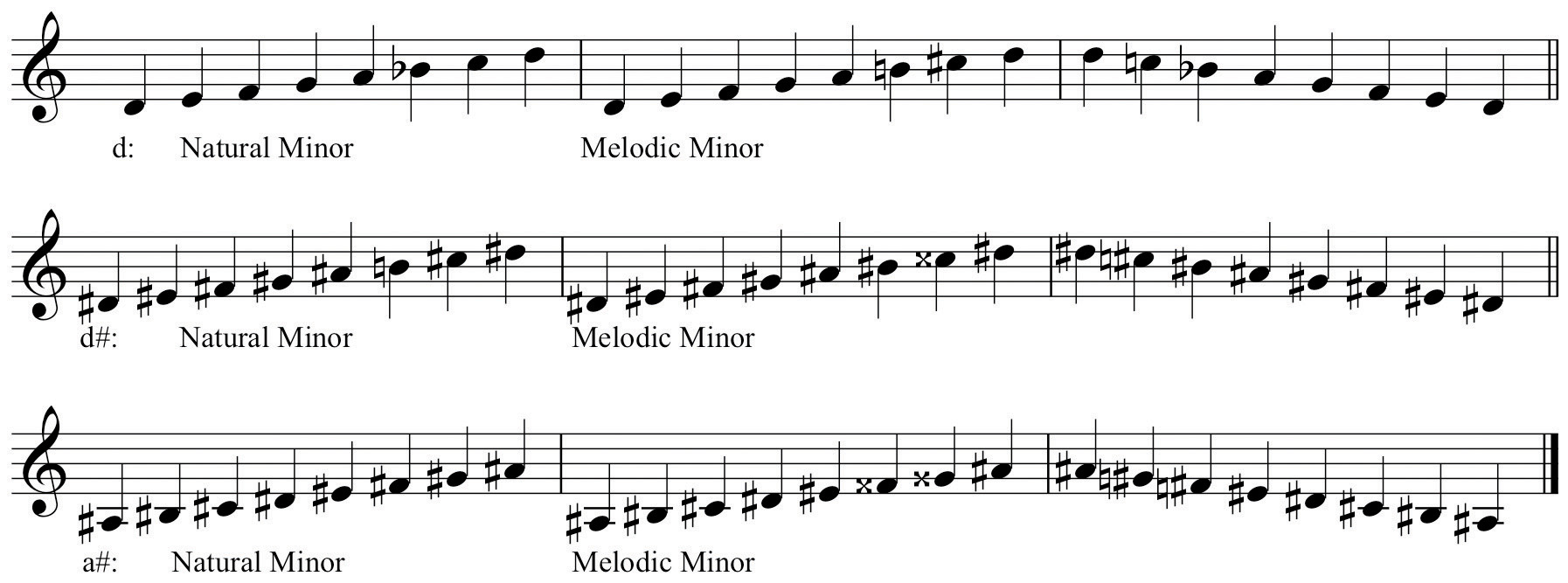

Many nondiatonic scales have no identifiable tonic. Scales that do not follow the interval patterns of the diatonic or pentatonic scales are called nondiatonic scales. To get from one end of the scale to the other, they require gaps of more than a half step. Pentatonic scales, as their name suggests, have only five notes.

The melodic minor scale, however, ascends with the modifications noted above, but descends in the natural minor scale. All the patterns to this point have been the same as one climbs and descends the scales. In this scale, the sixth and seventh notes are each raised one half step. There is now an interval of one half step between the seventh and eighth notes, and one and a half steps between the sixth and seventh notes. This scale is the same as the natural minor scale, except the seventh step is raised a half step. There are half steps between the second and third and the fifth and sixth degrees whole steps exist between all other steps. These scales have seven different scale degrees. Likewise, if you know the pattern for any other scale, you can create them, too. By changing the first note, then using the pattern as a guide, you can construct any major scale. The pattern of whole and half steps is the same for all major scales. There are half steps between the third and fourth and seventh and eighth scale degrees whole steps exist between all other steps. The major scale consists of seven different pitches. The seventh tone of the major, harmonic and melodic minor scales is called the leading tone if it is one half step lower than the tonic. The subtonic is the seventh note in the natural minor scale. The third is the mediant, halfway between the tonic and dominant. The other notes in the scale also have names. Because of this, diatonic melodies often end on the diatonic note.

It is the most 'stable' note, or rather the easiest to find. Diatonic scales are scales that include half and whole steps. Here is a list of all the topic on this page:Ī scale is a group of pitches (scale degrees) arranged in ascending order. Our Flash Keyboard can help your understanding of this area.


 0 kommentar(er)
0 kommentar(er)
